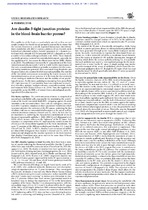| dc.description.abstract | The capillaries of the brain are particularly special, as they are not
simply conduits for blood, but are primarily responsible to ensure that
the neurons function in a strictly regulated homeostatic interstitium.
Brain endothelial cells (BECs) express a plethora of ion channels on its
luminal and abluminal surfaces, namely: potassium (K+
) channels (i.e.,
Kir2 and Kv1), chloride (Cl–)/bicarbonate (HCO3–) channels, as well as a number of ion-solute exchangers (Redzic et al., 2011). These channels essentially prioritize vectorial transendothelial transport, especially for the regulation of K+ flux across the blood-brain barrier (BBB) (Redzic et al., 2011). The differences between the K+ concentration of the brain interstitium and plasma is only 2 mM to 4 mM, but the maintenance of this ionic concentration difference provides a constancy for the neuronal resting membrane potential, their associated firing thresholds and the preservation of a constant level of neuronal excitability. | en_US |

